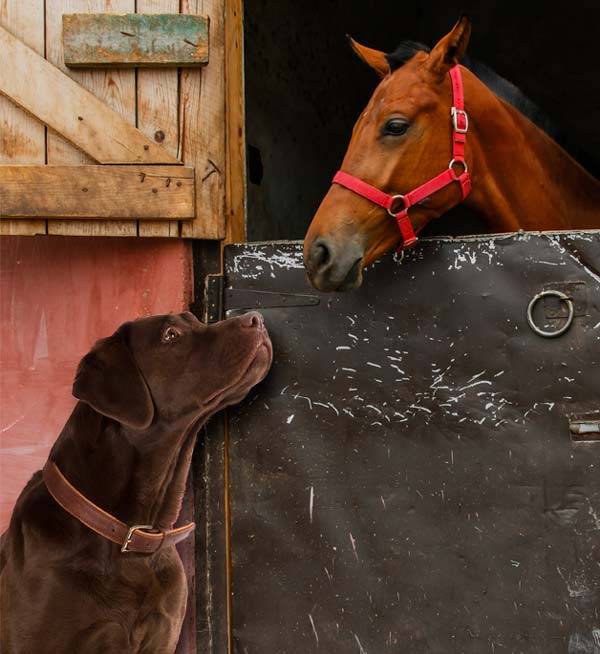“I’d like you to have a look at her back end. There’s something… well there’s something not quite right.”

Image ©iStock.com/amriphoto.
The thin lady looked at me over her glasses while Honey, her chocolate Labrador, continued to rub the aforementioned back end against me, tongue lolling, eyes rolling and telling me in Labrador-ese that I was her very best friend in the whole world, thanks to the gravy bone I had just fed her.
I had already taken a quick peek at Honey’s hindquarters (it generally saves time in consultations if you start your clinical exam while the owner is still letting you know what the problem is) and hadn’t noticed anything wrong, but Honey had enjoyed the back rub.
“Is she having any trouble peeing or pooing?” I asked as I lifted Honey’s tail and inspected areas that even best friends don’t normally cast their eyes over.
“No,” said the lady, frowning and pushing her glasses back up the bridge of her nose.
“Is she licking a lot around there? Does it seem painful?” The lady shook her head, slightly narrowing her eyes.
Honey noticed the slight break in tickling, and pressed her face against my leg in protest. I absently tickled her ears and tried not to sound too exasperated when I asked: “So, what exactly is worrying you about her back end?”
The lady sighed. “Well,” she said. “You’re not going to believe me, but…”
Ah. The “you’re not going to believe me, but…” conversational gambit is always a tricky one to respond to. Firstly because, much like the related statements, “I’m not being racist, but…” and “I’m not being funny, but…”, it’s invariably followed by something that even Uri Geller would find a bit hard to swallow.
Secondly, if you then follow the suggestion and don’t believe it, the client will immediately lose all respect for you as a medical professional.
The thin woman didn’t disappoint in either regard.
“…my horse whisperer came the other day.”
“To… er… see Honey?” I asked.
Frown. “No.”
Of course not, I thought. Silly of me.
“She came to see Pallas, my thoroughbred.”
“I see,” I said, not seeing.
“Well,” the woman continued. “She explained to me that, in her conversation with Pallas, Pallas had told her Honey was suffering from a pea-sized lump in her urethra.”
I looked at the lady. The lady looked at me. I looked at Honey. Honey wagged her tail and grinned at me.
“Er…” I said. I was no expert, but as far as I was aware, horse whisperers didn’t literally talk to the horse, but maybe I was mistaken.

Images ©iStock.com/happyborder & mikafotostok
“And, er…” I asked, feeling my IQ draining for even asking. “How did Pallas know?”
“Because Honey told her,” the lady said, squinting her eyes and daring me to contradict her.
I looked at Honey. Lovely as she was, it seemed unlikely she knew the equine word for “urethra”. I briefly imagined the conversation between the two:
“Alright, Pallas. How you doing? Hay good this year?”
“Yeah, pretty good, can’t complain. Things are stable. How’s yourself, Honey?”
“Well, Pallas, as it happens…”
I sighed.
“I’m really not sure that…”
I watched the frown deepen on the woman’s forehead. “I would like you to check, please.”
To my shame, I did. I even said something along the lines of “Well, I’m happy to take information from all sources,” as I palpated Honey’s urethra. It was completely normal. I told the lady so. She nodded and thanked me – another victory for conventional medicine.
Twenty minutes later she phoned the practice asking for her details to be transferred to another vets. Her horse whisperer remains, as far as I’m aware, employed.

Leave a Reply